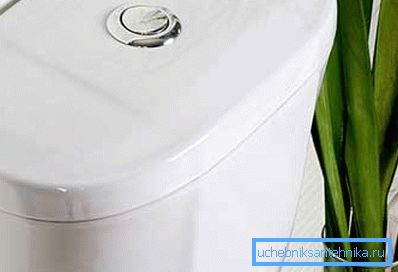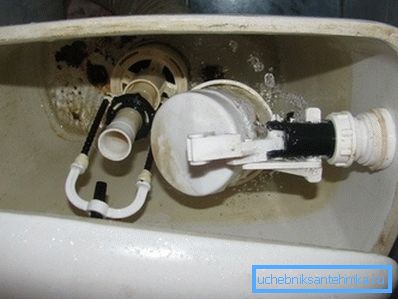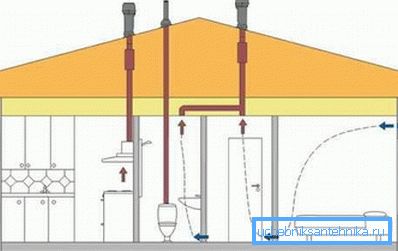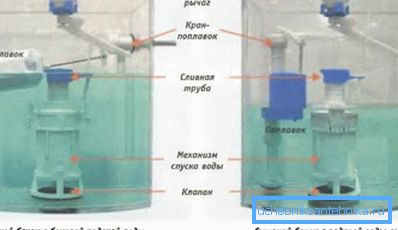Condensate on the toilet bowl: available methods for solving
In this article we will describe how to remove condensate on the toilet bowl. We will also find out why condensate is formed on individual elements of plumbing, how it threatens and how such a problem can be solved.
Currently, the market offers a wide range of toilet bowls, which differ in configuration, size, type of production materials and technical equipment.

Of course, the modifications offered in specialized stores, distinguishes the price, which depends on the brand and operational characteristics of plumbing. But, unfortunately, the majority of toilet bowls are equipped with drain cisterns, on which in operation there is a strong condensate.
And only a small number of manufacturers seriously approaches the solution of the problem, offering the buyer tanks that do not sweat. So, why does condensate appear on the toilet bowl?
Causes of condensate on the plumbing

Have you noticed that condensate accumulates on the toilet bowl? There is nothing surprising in this, as the fresh water inside the tank is an order of magnitude colder than the air in the room.
Ideally, the water, getting into the tank, for a certain time has time to warm up and the walls of the tank from the outside do not sweat. Most often, dew appears because the shut-off valves are configured incorrectly and the volume of cold water is constantly replenished. Moreover, the air in the bathroom is humid, which, again, contributes to the misting of cold ceramics.
So, the causes of the problem are few, it remains to determine how to fix them with your own hands.
The timeliness of the fight against the fogging of plumbing is especially important, because if you do not pay enough attention to excessive moisture, a number of negative consequences are possible, among which we note the following:
- on-site formation of smudges of characteristic dark spots;
- the appearance of mold, which will later be difficult to remove;
- souring of the bolts connecting the tank and the toilet.
Now, when we know that excessive moisture in the plumbing is harmful, it remains to determine what to do with the condensate on the toilet cistern.
Check ventilation performance

In order to prevent the plumbing from misting, first of all, it is necessary to make sure that the ventilation of the bathroom is working effectively.
Important: It is easy to check the work of the exhaust in the toilet; it is enough to bring the lit candle to the decorative ventilation grill and see how far the flame deviates. If the fire is standing upright still, then ventilation does not work.
Normalize air circulation as follows:

- The decorative grille is removed and a special ruff is pushed into the ventilation duct, which advances deep into the channel and removes all contamination.
- If the channels are cleaned, but the traction is weak, instead of a decorative grille, you can install an axial fan, which will force the air out. Accordingly, the more powerful the fan chosen by you, the less humid and warm air will be in the room.
- If the bathroom is located in a private house, to improve air circulation, you can use natural ventilation. Such systems operate due to the difference in air pressure inside and outside the house, and their price is not as high as the manufacture of a forced system.
- Another effective way to improve the air circulation in the bathroom is a professional design of the air supply system. For these purposes, experts are invited who will determine the best option for the distribution of air flow and select the necessary ventilation equipment.
Now that we have figured out how to remove the condensate on the toilet tank, we’ll consider other effective solutions.
We repair shut-off valves

If it is not clear why condensate is collected on the tank, you need to make sure that the drain mechanism works as necessary.
If the drainage mechanism is incorrectly set, then a stream of water constantly flows into the toilet. As a result, the volume of fresh cold water in the tank is constantly replenished and you have to look for an answer to the question of how to remove condensate from the toilet bowl.
Adjust the drain mechanism is easy.
The adjustment instruction on most of the tanks is as follows:
- Remove the top cover. On some versions, the lid is removed freely without much effort, in other varieties, in order to remove the lid, you need to unscrew the ring located around the drain button.
- After removing the lid, we determine the type of drain. Most often, a plastic float is mounted on a plastic rail, which, as the hydroaccumulator is filled, blocks access to water. At the end of the rail is a fixing screw, which can tighten the rail in the desired position. As a result, the mechanism will work when necessary.
- Install the cover to its original position and use the plumbing without the threat of fogging.
Important: There are valves with a different design. However, the principle of operation of all these devices is similar, so it will be easy to understand the settings.
If the drain mechanism is not supplied to the setting or is broken at all, it is necessary to find a suitable replacement, install, adjust and thus ensure that there is no dew on the faience.
Double tanks

If you still do not know how to get rid of condensate on the toilet bowl, instead of the usual plumbing, you can use a special tank with double walls and a layer of insulation. As an example, we note the products presented under the brand name Ido Seven D.
The device is a plastic container that performs the function of the main accumulator. A faience casing is put on top of this tank, between which and the main tank there is a micro-interlayer of air. When purchasing products with double walls, you can be sure that the question of how to deal with condensate on the toilet bowl is no longer relevant.
Conclusion
Now that we know what to do with the condensate on the toilet bowl, we can effectively solve the problem that is relevant for many bathrooms. Are there any questions that could not get a comprehensive answer? In this case, you can watch the video in this article.